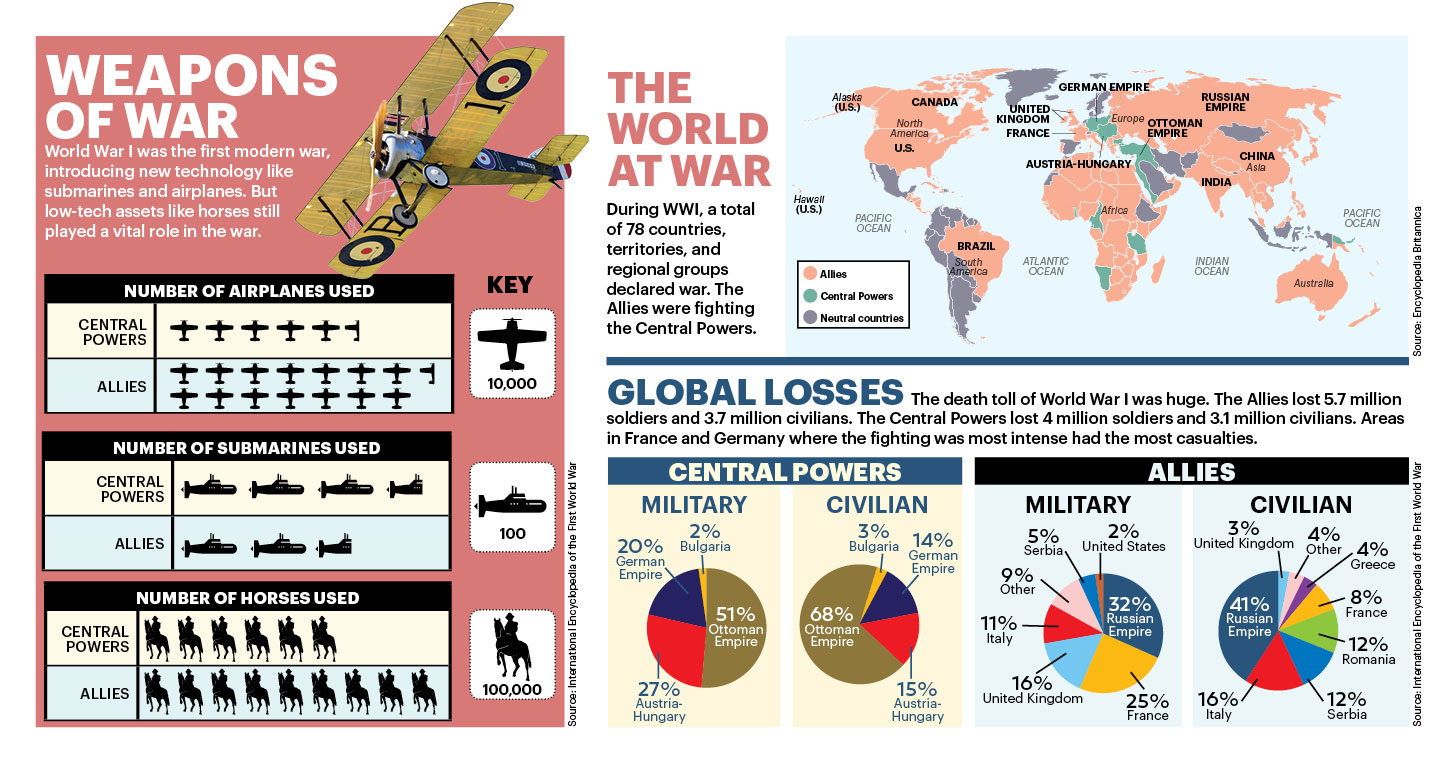November 11, 1918—100 years ago this month—marks the end of World War I. Countries from every continent except Antarctica took part in what became known as the Great War. Although it happened a century ago, the war’s effects can still be felt today.
One of the war’s biggest impacts can be seen on any modern map. Before World War I (WWI), the Ottoman Empire covered most of the Middle East, while the Russian and German empires stretched across Europe and Asia. An empire is a group of states under the control of a single leader. After the war, some empires dissolved into independent countries. For example, today’s Turkey and Syria were part of the Ottoman Empire before WWI.
The war began because of a conflict between Serbia and Austria-Hungary. Alliances between countries are supposed to prevent war. Instead, these alliances forced countries into fighting as WWI escalated. The Central Powers, led by Austria-Hungary and the German Empire, fought the Allies, led by France and the United Kingdom, who allied with Serbia (see map).
WWI was also a turning point in how wars are fought. When it started, trench warfare was the standard way to fight. Soldiers would dig trenches and remain in one place, using weapons such as machine guns and cannons that were difficult to move. Over the course of the war, new innovations such as fighter planes, tanks, and submarines made battles more mobile—and more deadly.
On November 11, 1918, the German Empire signed an armistice agreement that ended the war. Although WWI was called “the war to end all wars,” it caused political turmoil throughout Europe. The changes it made to the world map and to warfare set the stage for World War II.


